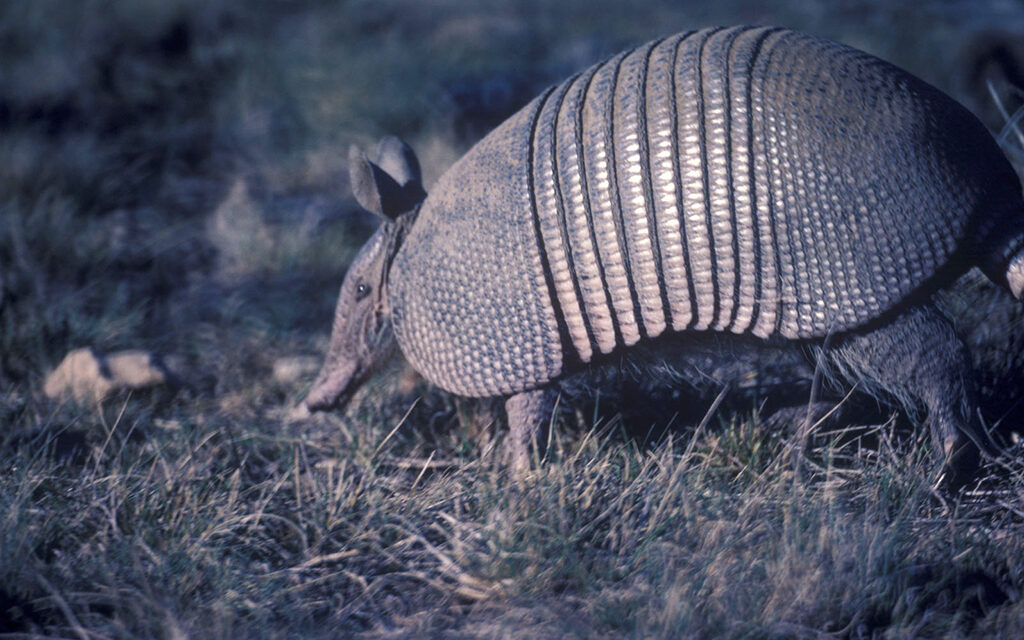by John Jefferson
I have always been intrigued by armadillos (Dasypus novemcinctus). At least since childhood. Growing up on the outskirts of Beaumont with a hundred or so acres of pineywoods, oaks, and yaupon behind our house, I saw plenty of them.
After my father’ military unit was shipped to Africa in WW II, we moved in temporarily with my grandmother and aunt. Their house had a pier and beam foundation; there was considerable crawl space underneath the house. That was enticing to small animals and adventurous little boys.
At age 16, I was entrusted with my father’s 16 -gauge, pump shotgun. I hunted ducks with a friend.
At night, an armadillo would visit beneath the house, probably looking for grubs, ants, or small insects for supper. Any unexpected noise – like someone flushing the toilet or sneezing, — would startle it causing it to jump or rear straight up on its hind legs. If any of the house’s plumbing happened to be above it, a dull, metallic thud would occur that would awaken the house.
My grandmother assigned me to defend the premises against this annoying sleep disturbance. I only shot one, but it took a while before another ventured near.
Are they vicious? Do they attack? Do they bite? No, to all the foregoing. Later in my life, though, they provided great sport to a father and two sons. Chasing and occasionally catching one was a unique challenge.
As a rancher and I were deer hunting on his place one day, we heard a nearby rustling of leaves. An armadillo noisily trudged out of the brush, slowly heading straight us. They don’t see well, don’t have a great sense of smell, and don’t fear a couple of yokels standing and silently. When it ambled alongside the landowner’s boots, he slowly reached down, grabbed it by the tail and lifted it off the ground. The upside-down critter squirmed for several minutes.
“You ever seed uh armadillo throwed in a stock tank?” he asked me. I hadn’t, but hoped I soon would.
“What do they do?” I asked.
“They sink all the way to the bottom,” he replied, “and then come walking out the other side.”
We were standing atop his tank dam. It was the natural thing to do. Still holding the now still ‘dilla by the tail, he walked to the edge of the dam, swung it behind him twice to build up good momentum for a swing and launched it through the air. It landed solidly near the middle of the tank with a huge splash and immediately … began a frantic swim to the far bank, huffing and puffing like a dog unaccustomed to swimming. We both stood there laughing.
“I never seed one do that,” he allowed.
Sadly, armadillos seem to be declining. Their major enemy is said to be a Ford pickup’s bumper. As the population of pickup bumpers increases, I guess that decline could be expected.
Texas’ population may have outgrown a cool, little critter’s future.
JJ





